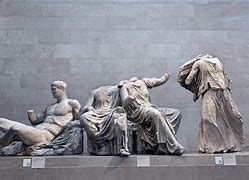History of Holiday Music
One of the most memorable parts of the holidays is the music we listen to. Immediately after Halloween, joyful music that encapsulates the holiday spirit starts playing and while it can sometimes be annoying and repetitive, you cannot deny that the music is catchy and super memorable. One thing people do not recognize is how much holiday music has changed over the years and how it has become what we recognize today.
The Middle Ages are when the earliest Christmas songs were born. The 12th century brought us the hymn “O come, O Come Emmanuel,” although the music and words we are most familiar with were adapted and translated respectively in the mid-1800s. Another early favorite is the “The First Noel,” which dates to the 13th century. The 16th century brought us three other traditional songs: “The Twelve Days of Christmas,” “God Rest Ye Merry Gentlemen,” and “O Christmas Tree.” Next to “Silent Night,” “O Christmas tree” is the second most popular holiday song to originate from Germany. Another fact is that the title “God Rest Ye Merry Gentlemen” does not entirely translate to the classic title people know it as. The Old English word “Merry” best translates in modern English to “pleasant” or “agree-able” not happy. And “rest” in Old English best translates to “keep.” Thus “God Rest Ye Merry Gentlemen” most accurately means “God Keep You, Pleasant Gentlemen.”
Most of the classic songs we know had their origins in the streets and churches of England in the 1600s. Two examples are “We Wish You a Merry Christmas” and “Here We Come a Caroling.” Little is known about the origins of both however, what we do know Is that “Here We Come a Caroling,” otherwise known as “The Wassail Song,” was a song meant to wish a person good health and good cheer in the New Years. During the 1700s, Christmas songs gained popularity, partly due to the publication of song collections. The famous classical composer Handel published several holiday songs that still maintain their popularity today including “While Shepherds Watched Their Flocks by Night” and “Joy to the World.”
After 1840, the face of Christmas was changed forever. For centuries, several religious denominations and movements, such as the Protestant Reformation and Puritanism, had condemned and sometimes even abolished Christmas celebrations as pagan traditions. But when Prince Albert married Queen Victoria, he brought with him German customs. One such custom was the celebration of Yule, or Yuletide, a winter festival that emerged from an ancient German pagan religious festival. These customs were mixed with the English celebration of Christmas. Christmas was now re-invented and included elements such as the evergreen tree, greenery, exchanged gifts, caroling, and Christmas cards.
The Middle 30 years of the 1800s, from 1828-1868, brought us our first surge of new Christmas tunes, including: “Silent Night,” “Joy to the world,” “Hark! The Herald Angles Sing,” “It Came Upon a Midnight Clear,” “O Holy Night,” “Good King Wenceslas,” “Angles We Have Heard on High,” “We Three Kings of Orient Are,” “Jingle Bells,” “Up on the Housetop,” “What Child is This?,” “O Little Town of Bethlehem,” “Away in a Manger,” and “Jolly Old St. Nicholas.” Although some tunes written during this time remain in obscurity (such as “Gather Around the Christmas Tree,” composed by the same person who gave us “We Three Kings of Orient Are”), many are commonly known and sung to this day.
The Mid to late-1800s were a time not only when new Christmas hymns were written, but when hymns were translated into English such as Adeste Fideles in 1841 and lyrics were added to older tunes such as the 2nd and 3rd stanzas of “O Christmas Tree” in 1824.
The 20th century saw a rise in electronic entertainment like radio, TV, records, and movies. Many Christmas songs from these decades were tied to and premiered through one of these forms of media. The Tune “Winter Wonderland,” made in 1934, was first recorded by Guy Lombardo and became a big hit again in 1650 when it was recorded by the Andrews Sisters. Gene Autry, the famous “Singing Cowboy,” both wrote the lyrics to and helped popularize the 1946 Christmas standard: “Here Comes Santa Claus.” Another Gene Autry-introduced song, that also happens to be the second largest-selling holiday songs, is “Rudolph the Red-Nosed Reindeer.” It had maintained its popularity due to the beloved animated TV special that premiered in 1962 and is still aired annually.
Today, Christmas songs are the norm and every year you can bet at least one music artist is releasing a Christmas album. One of the most well-known Christmas songs is “All I Want for Christmas Is You” by Mariah Carey. Even after twenty-five years after its release, it still consistently lands in the number one spot on the Billboard Holiday 100. Other memorable Christmas songs include “Santa Tell Me” By Ariana Grande, “8 days of Christmas” by Destiny’s Child, “Baby It’s Cold Outside” by Idina Menzel and Michael Bublé, “Candy Cane Lane” by Sia, “What Christmas Means to Me” by John Legend, and “Underneath the Tree” by Kelly Clarkson. Even though Christmas songs have drastically changed over the years we still get that nice, warm feeling when listening to them. In the end, the thing that ties all these songs together is the spirit of Christmas that runs through them.





